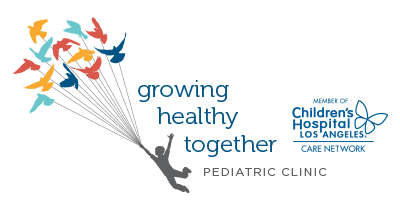 When thinking about their kid’s health, parents don’t always think about genitalia. For many people, private bits don’t exist until puberty. So, there’s a general attitude of we don’t need to talk about it. However, it’s important to consider all aspects of your child’s health: even vulvovaginitis.
When thinking about their kid’s health, parents don’t always think about genitalia. For many people, private bits don’t exist until puberty. So, there’s a general attitude of we don’t need to talk about it. However, it’s important to consider all aspects of your child’s health: even vulvovaginitis.
Vulvovaginitis (or vulvitis, or vaginitis) is a general term that describes infection or inflammation of the vulva/vagina.
Note: the vagina describes internal genitalia and the vulva describes the external genitalia.
These kinds of infections are quite common in young kids of all ages. Consequently, vulvovaginitis makes up 61.8% of childhood or adolescent gynecological cases.
Causes of Vulvovaginitis
First of all, causes of vulvovaginitis typically include allergic reactions, dermatitis, and bacterial infections. Also, it can be caused by anatomical abnormalities, skin conditions, tumors, or trauma. Young girls are sometimes more sensitive, simply due to having lower hormone levels than adults. Additionally, kids with poor hygiene, without pubic hair or labial fat pads, and kids that are obese are more likely to have vulvovaginitis.
Newborns
Babies will sometimes have some discharge that’s thick and grey-white or sometimes is bloody. New babies have some maternal hormones left from in utero. After birth, maternal hormones sharply drop, causing a thick discharge. It is perfectly normal and usually goes away within 10 days. If your baby still has discharge 10 days post-birth, contact your pediatric healthcare practitioner.
Symptoms of Vulvovaginitis
- Irritation and itchiness of the vulva/vagina
- The pain of the vulva/vagina
- Inflammation of the vulva/vagina
- Vaginal discharge (yellow or brown)
- Painful urination
- Redness of the vulva
- Vaginal bleeding
In addition, discharge can be quite normal for some. Everybody’s vagina is different. For example, discharge can be a response to changing estrogen levels based on age or stage of puberty.
Treatment and Diagnosis
Diagnosis usually involves an external physical exam and/or vaginal culture. Contact your pediatric practitioner for questions, concerns, or to schedule an appointment. Pelvic exams are painless and are a great opportunity to ask important questions.
Furthermore, treatment may include antibiotics, sitz baths, probiotics, and cranberry tablets.
Sitz baths are simply baths for soaking the perineal area (urethra to anus). You can do this by buying a sitz bath at your local store (ex. Target) or in the bath. Sitz baths can promote healing by cleansing the area and increasing blood flow to heal, relax, and relieve pain.
Also, probiotics can help to restore good bacteria to the system and promote beneficial flora.
Cranberry is helpful in keeping bacteria from adhering to the urinary tract walls. Keep in mind that sweetened cranberry juices can cause more harm than good.
Sometimes you may simply need to help your kid change some habits. This is a great time to teach your child how to care for their vagina.
Caring for Vaginas
- Wear only plain cotton underpants.
- Don’t use detergents that cause irritation.
- Sleep in loose pajamas, without undies.
- Avoid wearing tight clothing (tights, leggings, etc).
- Bathe every day (don’t use irritating soaps or bubble baths).
- Don’t scrub or use abrasive soaps, and only clean external genitalia.
- As your kid ages, teach them not to use any feminine sprays, douches, powders, etc.
- Wipe front to back.
- Don’t sit in wet clothes or bathing suits. (Change into dry clothes after swimming.)
The American College of Obstetricians and Gynecologists recommend that young women have their first gynecologic visit between the ages of 13 and 15. Also, young girls that are thinking about having sex or have had sex for the first time should see a gynecologist.
Most importantly, the presence of any sexually transmitted infections, like gonorrhea or chlamydia, should raise questions about sexual abuse. In this case, it’s important to carefully evaluate the situation. Your pediatric provider is trained to be helpful with these difficult issues. Learn more about how to prevent and identify abuse.
In conclusion, if you have questions about this topic, contact your pediatric provider. Your provider is a professional and is well-equipped to answer your questions, even if they seem taboo. Finally, for questions or concerns, please respond to this blog or contact us.




